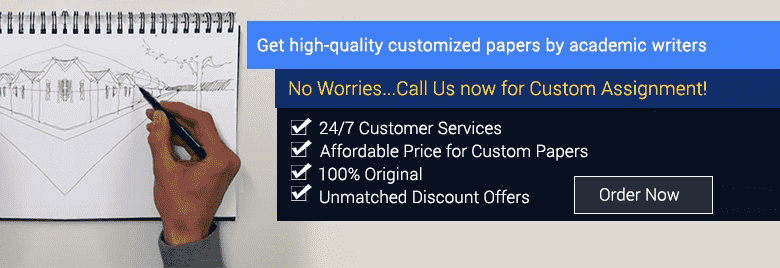Introduction
Organisation behaviour is defined as a term that helps to know about the employee’s behaviour that are working within the organisation. This is the study that helps the manager to interact with the employees so that the organisational goals can be achieved. This assignment helps to develop the understanding of how the organisational behaviour helps in motivating the employees by using different culture within the organisation (Ashkanasy and et. al., 2014). The company taken for the purpose of the study is TESCO which is the retail brand and is one of the largest retail supermarket chain in the world. The headquarter is in UK. It serves the largest service area in the world and employees around 476000 employee’s. This report will also help to analyse how an organisation culture politics and power influence the behaviour of individual. Also the evaluation of the content and process theories of the motivation and motivational techniques for achievement of goals in an organisational context would be analysed. Lastly concepts and philosophies of organisation behaviour within the business situation will be given.
P1 Analyse how an organisation’s culture, politics and power influence individual and team behaviour and performance.
This refers to the culture that an organisation has and through which the environment of the business organisation can be developed. The working condition of the organisation depends on the workforce and the top managers who are directs them. The company that has been taken into context is TESCO, and the power , political influence of the manager that influence the working condition within it would be discussed. For this Handy's Typology that defines the political and power culture has been taken into consideration which is as follows:
Handy's Typology
Handy has divided his typology into different parts that are following -
Power culture
This culture is defined as the culture in which the power has been given to the managers. As the power is in the hand of the people that influence the organisational goals, it also helps in achieving those goals (Bolino and et. al., 2013). In the case of TESCO it helps them to take good and fast decision as the power is given to the particular employee of the organisation that is the manager. They can use this culture so as to overcome the problem that its organisation has. The roles of the employee’s and the leaders is defined by those who are having the absolute power to take the decisions.
Role culture
This is the culture where roles and responsibilities of the employee’s is defined in a particular manner. The workforce sticks the the particular job and role that are assigned to them. In case of TESCO this role culture will help them to differentiate the role of employees so that the task can be done in proper manner and more efficiently.
Task culture
In this culture the task is assigned to the particular group. That group sticks to that task until the final solution is not derived (Borkowski, 2015). This culture helps TESCO in defining the task to the particular group so that they are able to perform the task on time.
Person culture
This is the culture that defined the behaviour of the individual within the organisation. This type of culture encourages individual to find himself to be superior then others. This would help TESCO to motivate the employees that are working within it so that they are able to achieve the organisational goals and responsibility.
Power of managers
It is defined as the skills of the managers that influence the thoughts of the employees in the organisation. In case of TESCO this will enable mangers to influence the motivational level of the employees that will help hem to achieve the organisational goals.
Legitimate power
This is the power that has been arrived by the position of the manager that it holds in the organisation (Carpenter, Berry and Houston, 2014). This can influence the employees working ability as they are the holder of the position that have the influencing power in the organisation. In TESCO the legitimate power is in the hands of that will enable them to make the decisions and will also make them to control the efficiency of the employees
Expert Power
This is defined as the power that has been derived through skills and the knowledge that individuals in the organisation has. This will help TESCO to analyse the skills and knowledge of the individuals who have the expert power and will make the work process run in smooth way.
Referent Power
It is the interpersonal relationship that the individual has with the top managers in the organisation. Sometimes this power has negative impact. Also this power will help individual to influence the work organisations environment in a positive way.
Coercive Power
This power is defined as the power that has been derived through making the threat in environment of organisation (Coccia and Rolfo, 2013). This type of culture is used mostly where the work is done by the junior employee’s. In TESCO this will help in making the organisational behaviour positive towards the work that has to be done.
Reward power
In this type of culture employees are rewarded for the better work that thy do. In this workforce is motivated to perform the task effectively so that they gain he advantage of reward. This will help employees in TESCO to gain the targeted plan on time and would also make the employees loyal towards the organisation.
Political behaviour of managers
This is the influence that managers make in the company by using their political powers. This type of political behaviour lowers the efficiency of the workforce as they may sometimes get demotivated. This has been defined by Hofsted's dimensional theory which given as under
Hofsted has given that various political dimensions in the organisation influence the working of the employees.
These dimensions are:
Power distance index: It is the degree of inequality that exist In the company. This type of culture should be avoided so that equality is possessed among the employee’s.
Individual vs collectivism: It is the strength of people that they have upon their group that they are working with. This influence the working of the group an makes the goals of organisation achievable easily (Fisher and To, 2012).
Masculinity vs feminism: This is defined as the distribution of roles between men and women in an organisation. This type of culture should be avoided and power should be distributed among the employees equally.
Uncertainty avoidance: It is the organisation culture that describes how people will tackle the anxiety that appears while working in the organisation.
P2 Evaluate how content and process theories of motivation and motivational techniques enable effective achievement of goals in an organisational context.
Motivation is the technique that helps organisation to make the workforce motivated to do the work in a profitable and efficient way. This will help the organisation to achieve the preset goals that are defined by the top managers (Graham and et. al., 2015). This type of culture manages the task of the employees and analyses the work performed by them so that the task is done in efficiently and on time. The motivational theories that can improve the culture of the organisation such as TESCO are:
Content theory of motivation:
In today's world the priority of any organisation is to motivate the employees that are working in the organisation so that they are able to achieve the organisational goals on time. This theory is defined by Maslow's Hierarchical needs. It is derived from the employees hierarchical needs that starts from the lower to the higher points. As and when the lower needs of the employee’s are fulfilled the higher needs derives.
This theory is divided in different stages that are:
Physiological needs: It is the first stage in the hierarchy that every employee in the organisation wants to cover. This is defined as the basic need of individual. These needs are like water, air , safety, food, home etc. by fulfilling these needs the employees in TESCO will get motivated as their needs are being fulfilled and they will perform the task in better way.
Safety and security needs: it is the second stage in the hierarchy. This is the need to safety and security of the employee’s that the organisation should take into consideration. The need as to safety towards the job and health of the employee has to fulfilled by the organisation. If these needs are fulfilled then employee’s will get motivated and will also make them loyal towards the work that is being done by them (Greenberg, 2013).
Social needs: These needs arrives when employee’s needs to become social in the environment that they are working in. employees wants the social recognition and want to love and being loved. If organisation like TESCO makes the environment where the social needs of employees are fulfilled then it will help the workforce to get rid of the loneliness that they have in their life and would also affect social isolation.
Esteem needs: it is the need that describes the behaviour of the employee in which they wants to get the attention in the social environment. In this the employee wants that they should be valued and marked as important while working in the organisation (Harms and Luthans, 2012). This would also help the managers of the TESCO so as top recognise the employees that are important for the working of the organisation and will help in retaining the skilled employees with them.
Self actualisation needs: This is the stage where the individuals wants that they should get a chance to develop themselves. They want to prove themselves as the best employee within the organisation so that they generate the position of self actualisation. This will help the employees in the organisation to motivate themselves so as to achieve the targeted gaols through their self confidence.
Process theory of motivation:
It is defined as the Psychological treatment that will enable the employee to get motivated to perform the task in a particular way so as to achieve the preset targets of the organisation. It is the theory that defines that resources available in the organisation should be distributed equally among the employees that are working within it (Kulik and Olekalns, 2012). This theory will help TESCO to increase the productivity of the employees effectively so that the organisational objectives are achieved on time.
Improved level of motivation:
If the company uses the theories that are given above then it will be able to resolve the complication that arises during the while performing the task. This will also lead to make employees motivated and loyal towards the overall objectives of the organisation. If the managers in the organisation fulfils the demand of the employees then they will work in a positive way. The employees working in the organisation would be filled with confidence through application of these theories. It will make the organisation to identify the best team member and the group that will function in accordance to achievement of the objectives of company.
P3 Effective team in comparison of ineffective team and different types of teams in an organisation.
Team is a group of individuals or members in an organisation. Team is formed to attain some prescribed objectives or to solve some specific problems in the organisation. In Tesco team is formed by considering talented employees, skills, qualifications, knowledge, etc. In other words team refers to collection of skilled and minded people who make attempts to accomplish common objectives in the organisation. They are motivated to attain higher targets in comparison of previous targets with optimum utilisation of resources (Lu, 2014).
Effective team
Effective team refers to the team who is capable of attaining prescribed objectives effectively in the organisation. A team can be made effective by providing them proper training and guidance in Tesco. The leader should execute training programmes in the organisation, in order to improve employees skills and knowledge so they can perform effectively. Effective teamwork is said to be when employees harmonize their work and attempts to accomplish common objectives in the administration. Good team can't be formed they are developed by doing hard work, struggle, commitment, and contributing themselves towards the organisation and its goals.
Ineffective team
Ineffective team refers to the group of individuals or members who are not able of making more efforts and completing assigned tasks. They are unable to accomplish desired objectives in the organisation. In context to Tesco ineffective team will demotivate other employees and reduce their morale and working efforts in the organisation. It will create problems in fulfilling desired targets. An ineffective team lacks effective, skills, talent, knowledge, hard working, etc. This type of team have no proper communications and listening. It is a major problem in developing employees and business in the organisation. It will hinder the overall organisation and its performance (Miao and et. al., 2013).
Different types of teams in organisation
Various types of teams are formed in an organisation, for achievement of prescribed goals and objectives. In context to Tesco different types of teams help in providing solutions to specific problems and accomplishment of organisational objectives. Different types of teams which are formed in Tesco are described under.
Assignment Prime is an online assignment writing service provider which caters the academic need of students.
Get Best Pricing Quotes Free Samples Email : help@assignmentprime.com Order NowProject team:- Project team is formed in an organisation to complete the work related to specific task or projects. This type of team consists members with different fields and qualifications (Moore and et. al., 2012). Members are assigned different responsibilities of similar projects or task in the administration. They work together by performing various roles of identical tasks, in order to accomplish them. These types of teams takes place for a short time period. After completing the assigned task or responsibilities the project team is discharged. These type of team will be able to solve different problems regarding projects or tasks in Tesco. It will overcome problems arising in completing the tasks.
Problem solving team:- Problem solving team is established for solving specific issues or problems in the administration. These teams are formed with combination of talented, high qualified, skilled and effective employees, in order to solve problems in organisation. In context to Tesco problem solving team will provide appropriate solutions for given tasks and daily operations. The problem solving team is made for temporary period, because their main aim is to solve particular problems in the administration. They solve issues by using innovative ideas and plans. It make employees work easier and save their time and efforts (Morgeson and et. al., 2013).
Virtual team:- Virtual team involves different individuals and members from various backgrounds and cultures, because this team is formed having individuals from different cities and countries. In context to Tesco virtual team is very effective in operating its business from various countries or places. In virtual teams individuals or employees communicate and share information, messages or data with the help of telecommunications services. These type of teams will assist the company in achieving prescribed targets and objectives easily from different locations. It will help in expansion and diversification of Tesco all over the worldwide.
Functional team:- Functional teams assist an organisation in performing various functions of identical projects. These type of teams execute different functions or activities and help in attaining common objectives in the administration (Ng and Feldman, 2012). Functional team is made with the combination of different individuals from various departments or divisions such as – finance, human resource management, marketing, operations, etc. Having functional team in Tesco will make individuals capable of attaining common objectives through dividing different functions of similar projects among them.
Bruce Tuckman's model of team development
Team development is very important in an organisation to achieve prescribed objectives in the organisation. This model was introduced by Bruce Tuckman in 1965. Developing teams and individuals have vital contribution in organisation's success and growth. In context to Tesco team development is essential for its growth and expansion. The leaders in Tesco should use this model to improve employees skills and knowledge in the organisation.
This model includes five different stages which are described under.
Forming:- Forming is the first stage in this model of team development. Team members have no knowledge and information about organisational goals or objectives and other members (Pinder, 2014). First of all they give introduction to one another and share their ideas, skills and knowledge. In context to Tesco forming stage will assist in identifying information and capabilities about individuals working in the team.
Storming:- In storming phase individuals consider one another as their team members. Team members have different ideas, thoughts and views, as everyone has different thinking and beliefs. Having various ideas and strategies, conflicts occurs among team members. Some individuals get disappointed while some are satisfied at storming stage. This stage may lead to employees motivation and dissatisfaction due to having various challenges and problems.
Norming:- At norming stage individuals come together to accomplish prescribed objectives in the organisation. They determine each others roles and responsibilities, develop strategies and processes – how to attain the desired targets. Norming stage will make individuals aware about their roles and responsibilities and directions to accomplish the assigned tasks in Tesco.
Performing:- In performing stage individuals concentrates on the assigned tasks and give their best to perform at high level to achieve desired outcome. Everyone's ideas and thoughts are respected and given importance. Individuals have no competition with one another and they cooperate with each other. Performing stage will encourage members to achieve desired targets effectively with cooperation and coordination (Robbins and Judge, 2014).
Adjourning:- Adjourning is the final phase of this model of team development. Individuals complete their tasks or projects at this stage and move to new directions or activities. The team is discharged after completing the assigned tasks. This will make employees free from one task and involved into new projects.
P4 Philosophies and concepts of organisational behaviour in business context
Organisational behaviour concept
Organisational behaviours is related with the nature and behaviour of both individuals and whole organisation. It involves different fundamental concepts which are concerned with employees and their nature, values, beliefs,culture, etc. in the organisation. It has two major elements which are – organisation nature and employees nature. Employees and their behaviour is influenced by various factors – individual difference, motivation, etc. The second element – nature of organisation determines employees standards, and business objectives in Tesco. Along with these basic components some philosophical elements are also involved in organisational behaviour. The fundamental concepts involves different points which are – perception, motivated behaviour, a whole person, value of the person, holistic concept, human dignity, value of the person, mutuality of interest and organisations are social system (Spector and Meier, 2014). The main aim of organisational behaviour concepts is to understand employees behaviours in Tesco. It will help individuals in improving their interpersonal skills and assist in dealing with various problems in the organisation. Organisational behaviours include a broad extent of subjects such as – teams,change, leadership, human behaviour, etc. It is concerned with – what individuals are doing in organisation and how behaviours impacts overall performance of administration.
Philosophies in organisational behaviour (Path goal theory)
Path goal theory of leadership is concerned with motivating individuals or groups in the organisation. This theory of motivation is based on Victor Vroom's expectancy theory. It was developed in 1971 by Robert J. House. It determines appropriate behaviour of leadership which is effective for individuals and best for the organisational environment or different situations, in order to achieve prescribed objectives. Its main purpose is to improve or increase employees motivation, satisfaction and empowerment, to make them more efficient and productive. Application of path goal theory in Tesco will help leaders in motivating individuals and completing prescribed objectives effectively and efficiently. Individuals get inspired through path goal theory and they perform at high level according to the guidance and direction provided by leader to accomplish desired objectives (Wagner and Hollenbeck, 2014). To apply this theory in Tesco and gain its advantages the leaders should use three steps involved in it. These three steps are described under.
Determining individuals and environmental characteristics
It is the first step for applying path goal theory in the organisation. In context to Tesco the leaders should identify both employees and environmental features in the organisation. They should determine individuals needs and demands before assigning responsibilities to them. By doing this employees feel happy as they are considered valuable and important in the organisation and they will perform their roles effectively and efficiently. The leader should consider following points to identify environment and individuals characteristics which are explained below.
Task design:- Task design is very important element to be considered. The leader should ensure that the task or project given to individuals is complicated or easy. In case of complicated tasks the leader should provide proper support and guidance to employees, so they can easily attain desired objectives in Tesco.
Formal authority system:- Clear objectives or goals should be provided by leader on the basis of task authority, in order to fulfil desired objectives. In context to Tesco providing clear and transparent objectives to individuals will make their work easier an they will be able to attain organisational goals effectively.
Work group:- Effective teamwork is very important to perform day to day operations and complete given targets in the organisation. Members in a team should support and cooperate one another to attain organisational objectives. If individuals working in a team are not supportive, the leader should support and provide cohesiveness to individuals in Tesco. It will reduce employees workload and save their time (Witt and Schwesinger, 2013).
Select a leadership behaviour
The second step, after determining employees and environment features, is to choose an appropriate style or behaviour of leadership, in order to support and motivate employees in Tesco. There are different styles of leadership to encourage and inspire individuals in the organisation. Path goal theory involves four types of leadership theories which are explained under.
Supportive style:- The supportive style of leadership explains that the leaders should support their teams in Tesco. They should create a safe and pleasant atmosphere for the individuals, so they can work effectively and efficiently. Using supportive behaviour of leadership will help individuals in performing their roles effectively with proper support of leaders.
Directive style:- In directive style of leadership the leaders provide proper guidance and directions to individuals regarding their tasks like – how to attain the goals, in which way the objectives must be attained, etc. The leaders can assist employees in attaining prescribed goals in efficient manner by using directive behaviour in Tesco.
Participative style:- Participative style of leadership explains that employees should be engaged in organisational activities and involved in decision making process of the organisation. Selecting participative style of leadership will increase employees efficiency and productivity by providing higher opportunities to take active participation in organisational activities.
Achievement style:- Achievement style of leaders' influence individuals to perform at highest level and achieve more than the desired outcome by facing different challenges. In context to Tesco the leader should use achievement oriented behaviour to set challenging tasks for employees to make effective use of their capabilities.
Motivational factors in goal accomplishment
The last step in path goal theory is to concentrate on different factors which are essential to encourage individuals to achieve desired targets in the organisation. The leaders in Tesco should consider following points.
Clear paths:- First the leader should provide clear paths to individuals, so they can achieve desired objectives in the organisation. Providing clear goals or paths will make work easy for individuals and they will give their best in Tesco.
Remove hurdles:- Second and important point is to remove hurdles, obstacles and problems in goal accomplishment. In context to Tesco removing obstacles will help employees to achieve desired objectives in effective manner.
Support:- Leaders support is very essential to motivate and encourage individuals in the organisation. The leader must provide better support to employees , so they can easily perform their roles and assigned tasks effectively and efficiently.
Conclusion
It is concluded from the above project report that organisational culture, power and politics play crucial role in organisation. All these has great influence on employees and overall organisation, as it affects in negative and both positive way. Motivation theories like process and content theory help managers to motivate employees in the organisation. Further different types of teams assist an organisation in performing various roles and responsibilities. They help the administration in solving different issues and problems. Path goal theory help leaders to motivate individuals to contribute towards organisational goals and its accomplishment. It encourages them to perform better through different leadership styles.
References
- Ashkanasy, N.M., and et. al., 2014. Neuroscience and organizational behavior: Avoiding both neuroeuphoria and neurophobia. Journal of Organizational Behavior. 35(7). pp.909-919.
- Bolino, M.C., and et. al., 2013. Exploring the dark side of organizational citizenship behavior. Journal of Organizational Behavior. 34(4). pp.542-559.
- Borkowski, N., 2015. Organizational behavior in health care. Jones & Bartlett Publishers.
- Carpenter, N.C., Berry, C.M. and Houston, L., 2014. A metaanalytic comparison of selfreported and otherreported organizational citizenship behavior. Journal of Organizational Behavior. 35(4). pp.547-574.
- Coccia, M. and Rolfo, S., 2013. Human resource management and organizational behavior of public research institutions. International Journal of Public Administration. 36(4). pp.256-268.
- Fisher, C.D. and To, M.L., 2012. Using experience sampling methodology in organizational behavior. Journal of Organizational Behavior. 33(7). pp.865-877.
- Graham, K.A., and et. al., 2015. The effect of leadership style, framing, and promotion regulatory focus on unethical pro-organizational behavior. Journal of business ethics. 126(3). pp.423-436.
- Greenberg, J. ed., 2013. Organizational behavior: The state of the science. Routledge.















